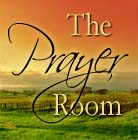
Before the Emancipation Proclamation, slaves seeking freedom escaped by way of the Underground Railroad, the discreet network of people who helped slaves escape to the north and to Canada. Those who went south and guided people north to freedom were known as conductors, with Harriet Tubman being the best known.
While the Emancipation Proclamation was enacted in 1863, news didn't reach Texas until June 19, 1865; and two years later the Freedmen's Bureau organized the first Juneteenth celebration in Austin.
Quilting lore says that the hefty handmade blankets played an integral role in the Underground Railroad, guiding slaves to freedom and warning them when danger was near. These 'freedom quilts' held secret messages and were typically made by conductors in Kentucky and Mississippi for slaves passing through by way of the Underground Railroad.
Specific quilts would be hung on the porches of homes along the way to relay a message to the slaves that they could visit there, get a lunch and then get on the Underground Railroad and move toward freedom. Each quilt relayed a specific and strategic message that was vitally important to the success of the journey.
There is indeed something very nostalgic about a quilt and, even today, each hand-stitched scrap of fabric tells a story, whether it's a dress remnant, a piece of dad's tie or a scrap of granddad's old trousers.
Texas artist Earline Green, whose grandmother made these handmade treasures, first learned about the stories that quilts tell after reading "Hidden in Plain View" by Jacqueline L. Tobin and Raymond G. Dobard. "There were a lot of things I discovered in the book in terms of hiding information that I used in my own work," she said. "I would give hints in the title what was going on in the quilt."
And that is precisely how conductors on the Underground Railroad were able to conceal their messages, too, thus enabling those in bondage to continue on the journey to freedom.
In Green's work titled "A Safe Place," which depicts people guarding a child in an abusive situation, she uses two of the same symbols - a log cabin and a drunken path. She said the log cabin with a yellow center was a symbol to move forward. If the center piece of fabric was red or black, it meant danger ahead.
The 'drunken path patch' was used to tell those on the Underground Railroad to take a path that zig-zags, like the gait of an alcoholic, Green explained.
Quilts, it seems, are oral histories stitched in time. They also symbolize prayers patched together and, often, a kind touch and warm embrace.
.jpg)












No comments:
Post a Comment